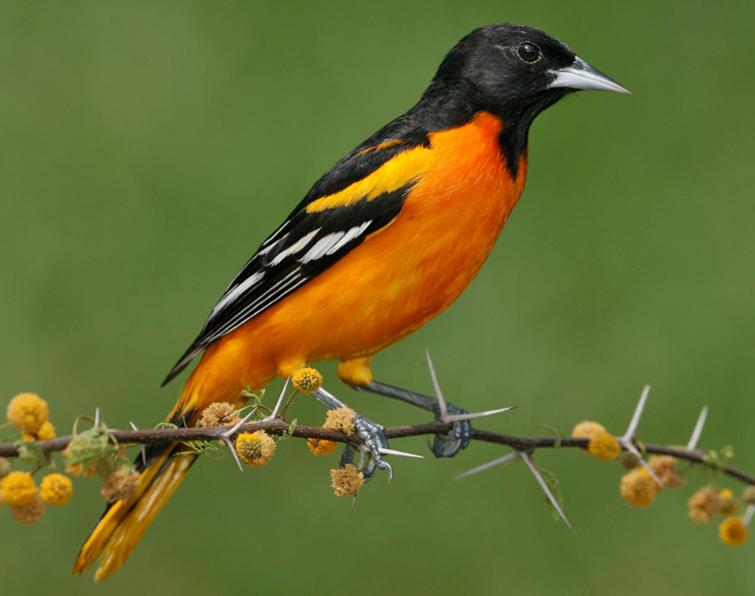
Icterus galbula
TAXONOMY
Coracias galbula Linnaeus, 1758, Virginia.
OTHER COMMON NAMES
English: Northern oriole, black-backed oriole, Bullock’s oriole;
French: Oriole de Baltimore; German: Baltimoretrupial; Spanish:
Bolsero de Baltimore.
PHYSICAL CHARACTERISTICS
7–8 in (18–20 cm); female 1–1.4 oz (28–41 g), male 1.1–1.4 oz
(31–40 g). Sexually dimorphic in color. Males with a black
head, wings, and middle tail feathers, and yellow-orange on the
breast, belly, shoulder, and the tips of the tail, with white
markings in their wings. Males in their second year resemble
females. Females, which are variable, are yellowish or orangish
green, usually with some black on the head, and greenish gray
wings. Juveniles resemble females, but lack black, and are usually
duller in coloration.
DISTRIBUTION
Breeds in eastern North America, from central Alberta and
southern Quebec south to northern Louisiana and central
Georgia. Winters from central Mexico south to northern
South America, Florida, Jamaica, and along the coast of southern
California.
HABITAT
Woodland edge and open woodlands.
BEHAVIOR
Territorial during the breeding season. Males defend a territory
with songs and chasing. In winter, solitary or found in
small groups.
FEEDING ECOLOGY AND DIET
Forage mostly in trees, gleaning insects, or eating fruit and insects.
Also forage on ground or low in vegetation.
REPRODUCTIVE BIOLOGY
Monogamous. Females (sometimes with some assistance
from males) weave a bag-like nest of grasses, which is suspended
from the branches of a tree. Generally 4–5 eggs are
laid from May to mid-June. Incubation 11–14 days; fledging
11–14 days. Single brooded, but replacement clutches may be
produced.
CONSERVATION STATUS
Not threatened. Widespread and common, but numbers declining
in many areas. Destruction of suitable habitat for them
on the wintering grounds may be affecting numbers.
SIGNIFICANCE TO HUMANS
Can be an important predator on defoliating insects; one of the
few birds that eat significant numbers of tent caterpillars
(Malacosoma).
Photo Gallery of - Baltimore oriole
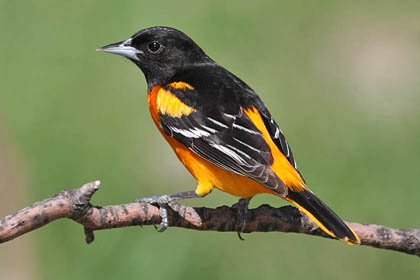
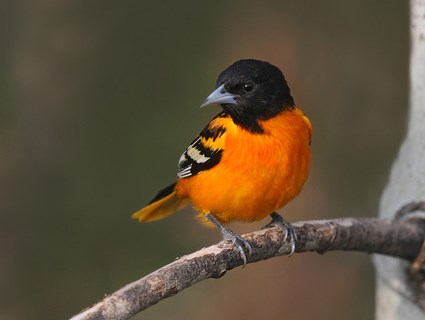
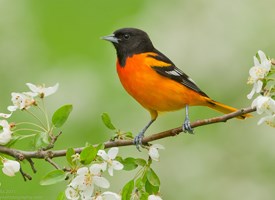
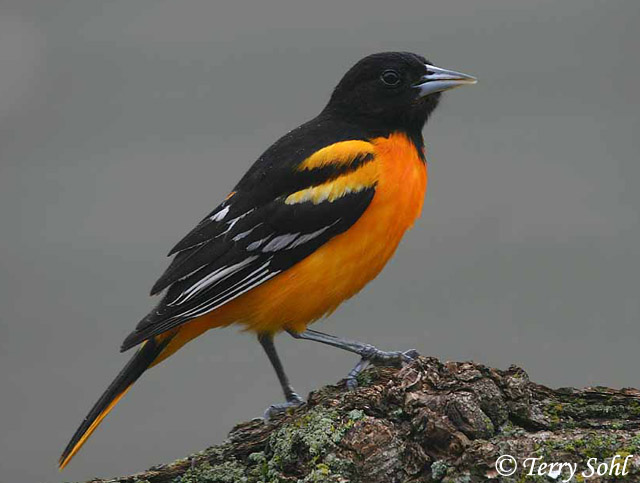
 Animalia Life
Animalia Life